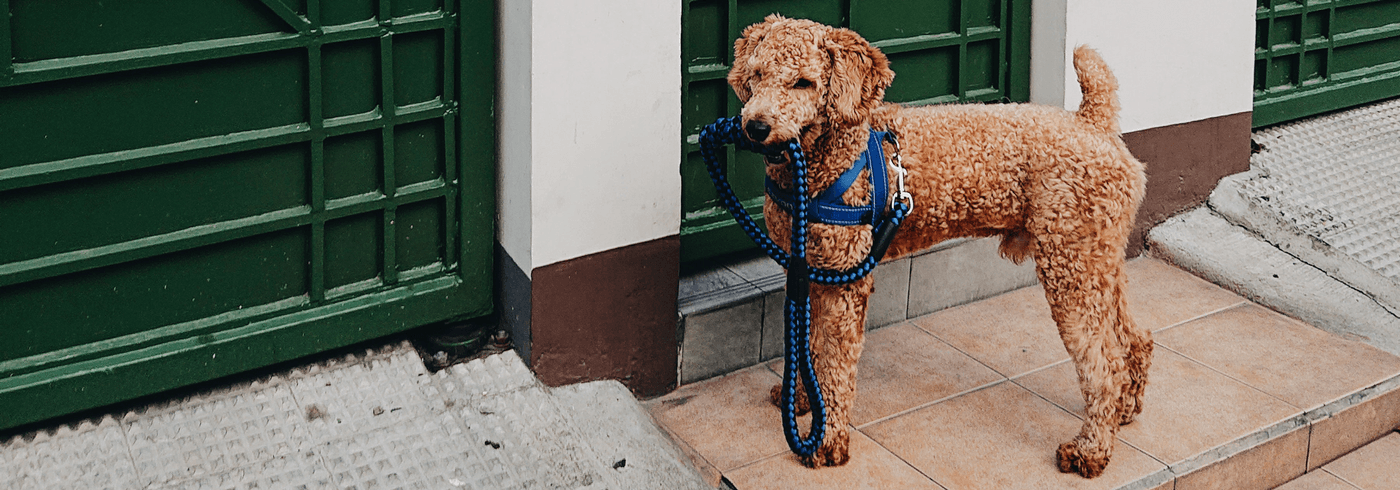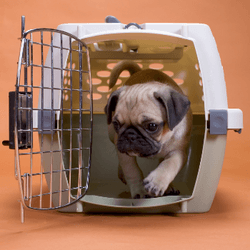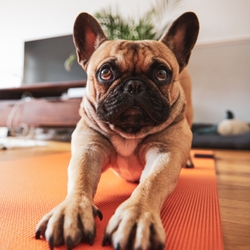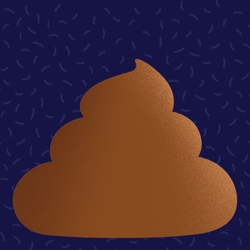
What's the difference between single and double coats in dogs?
Your pup might have an impressive supply of winter outerwear, but when it comes to their natural coat, there are a couple different layers they might be working with.
Yes, that stack of adorable doggy outerwear that you keep adding to with impulsive online purchases is technically a pile of dog coats, but we’re talking about the ones your pooch is born wearing. Though, when it comes to warmth and weather, your dog’s natural coat isn’t all that functionally different from outerwear. That said, your dog’s coat may be pretty different from other dogs’ coats. The reason? Single versus double coats.
Single-coated dogs — Chihuahuas and Poodles, for example — only have one layer of fur, so there’s no undercoat to speak of. Because of this solo layer, the fur is just laying on itself and the dog’s skin, so dogs with a single coat aren’t usually as ‘floofy’ as their double-coated counterparts. They also tend to get chilly when the winter winds come along, so single-coated breeds are more likely to need a human-made second coat when things get cooler. (That’s right — your incessant shopping habit for your dog isn’t all that unjustifiable.)
Dogs with just one coat also have a longer hair growth cycle, meaning their fur takes longer to grow out to its full length, which is part of why single-coated dogs generally shed a lot less often than double-coated dogs. For that reason, single-coated dogs can be better for the allergy sufferers of the world, as they’re less likely to spread a bunch of dander all over. That said, not all single-coated dogs are hypoallergenic, and a few double-coated breeds are, so you’ll want to do the extra digging if allergies are a major concern.
Double-coated dogs have a separate undercoat and top coat. The topcoat is made of stiff hair that helps repel water and keep dirt off your doggo, while the undercoat serves as a sort of built-in thermal layer. The fur in the undercoat is usually a dense, woolly texture, and is shorter than the one above, adding an extra blanket of insulation against the elements. Double coats are common in sporting and working dogs — think Shepherds, Huskies, and Labradors — and help make sure that a little mud, rain, and maybe even snow can’t keep them from a hard day’s work (or play).
That deep, fluffy, short underlayer is also responsible for the insane seasonal shedding when the dogs are ‘blowing’ their coats. You know, the kind of incessant shedding that never seems to end no matter how much you keep brushing, and brushing, and brushing, and brushing? So is the plight of the double coat.
We love all of our furry friends, no matter how many coats they were born with – and we’re always happy to throw yet another coat into the mix if we stumble upon something particularly fetching.




Comments: